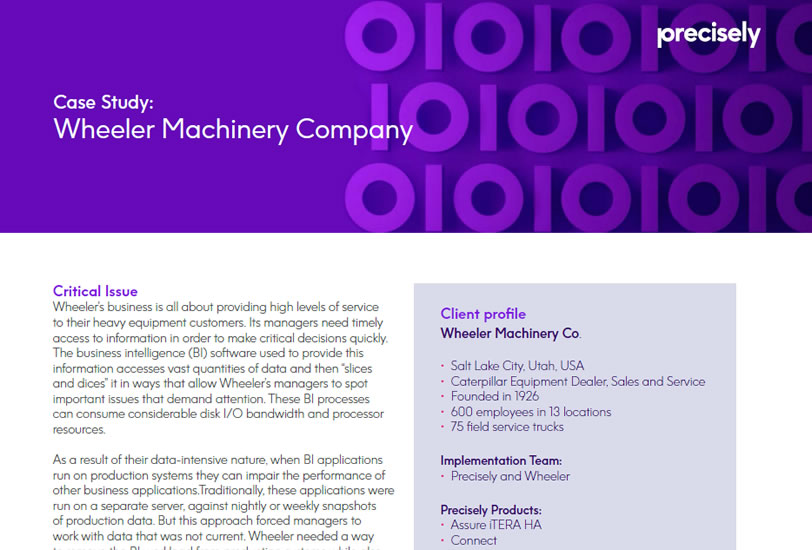Customer Story
Wheeler Machinery Company
With Precisely, Wheeler was able to remove BI workload from its production systems yet also provide managers with up-to-the-minute data
Wheeler Machinery Company’s business is all about providing high levels of service to their heavy equipment customers. Its managers need timely access to information in order to make critical decisions quickly. The business intelligence (BI) software used to provide this information accesses vast quantities of data. It then “slices and dices” it in ways that allow Wheeler’s managers to spot important issues that demand attention. These BI processes can consume considerable disk I/O bandwidth and processor resources.
As a result of their data-intensive nature, when BI applications run on production systems, they can impair the performance of other business applications.Traditionally, these applications were run on a separate server, against nightly or weekly snapshots of production data. But this approach forced managers to work with data that was not current. Wheeler needed a way to remove the BI workload from production systems while also providing managers with access to up-to-the-minute data.
Because of the ongoing replication interruptions, they experienced some situations that started to cause the business to lose confidence with the data and processes. There were numerous occasions when replication would fail just before midnight and the EDW build process would never start. As a result, key metrics and critical scorecards the company have come to depend on through all levels of the organization would not get distributed.
The other issue they encountered was with the data itself. When recovering from a replication outage there were times when the restart point was slightly off, causing issues such as gaps in the data which would only come to light when their users complained. As a result, they started questioning the overall validity of the data.
One of the requirements was that the technology architecture NOT change. Their business processes were in place and tested and as long as the real-time data was correct, the architecture was exactly as they wanted.
